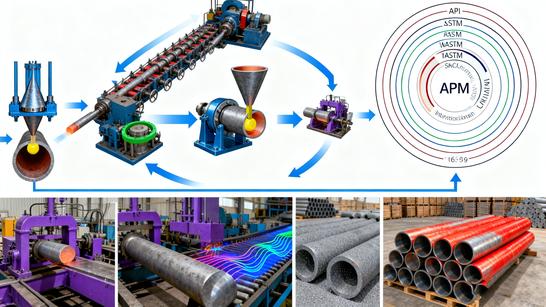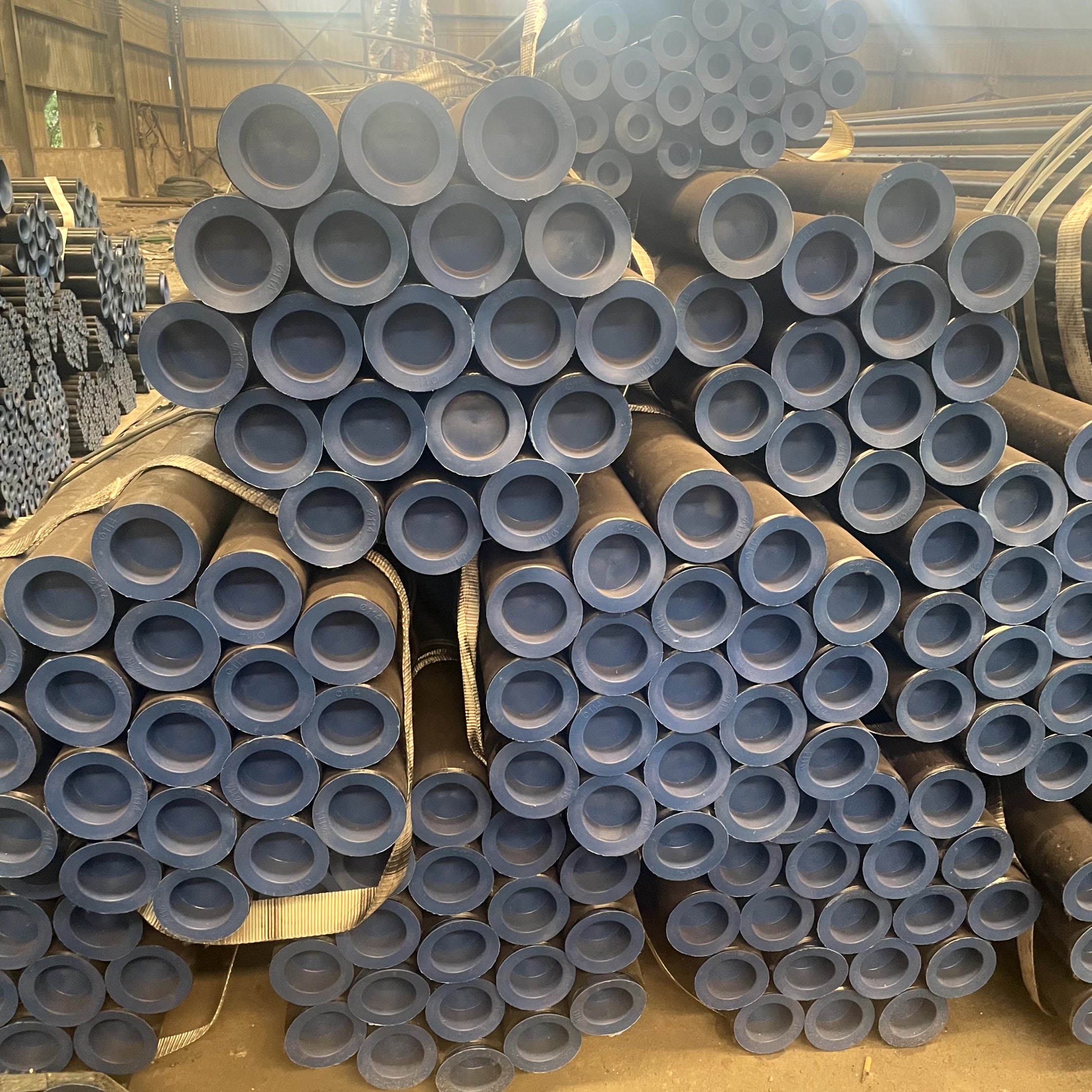In demanding sectors like construction, aerospace, industrial automation, and heavy lifting, hydraulic and pneumatic systems are the engines of controlled power and movement. The performance and longevity of the executive component—the hydraulic cylinder or barrel—is singularly dependent on its core element: the seamless tube for delivery cylinder.
This is no ordinary steel tubing. Operating under extreme pressures, often reaching hundreds of bars, the cylinder barrel material must possess exceptional yield strength and fatigue resistance. Crucially, its internal surface must maintain geometrical accuracy and roughness in the micron range to ensure zero leakage, optimal sealing function, and minimal wear on the piston seals. Even the slightest deviation in dimension or surface integrity can lead to pressure loss, accelerated abrasion, and catastrophic system failure.
This professional guide is designed to provide clarity on the critical technical demands, selection criteria, and comprehensive perspective—from material specification to final delivery state—required to master high-precision hydraulic tube solutions.
Before diving into the unique requirements of hydraulic cylinder tubes, you may wish to consult our [: Definitive Guide to Seamless Pipes] for an overview of fundamental manufacturing processes and material grades relevant to all [seamless tubular solutions].
Section I: The High-Pressure Mandate – Why Seamless is Non-Negotiable
The use of seamless pipe in hydraulic cylinder applications is a direct consequence of the severe operating environment.
1. Structural Integrity in High-Cycle Stress
-
Eliminating the Weak Link: Welded steel tubes introduce a potential stress concentration point at the longitudinal seam. Under high-frequency, pulsating pressure loads, this weld seam is highly susceptible to fatigue cracking. Seamless tubes, pierced from a solid billet, eliminate this vulnerability, guaranteeing uniform material strength across the entire circumference.
-
Yield Strength Requirements: Cylinder tubes typically utilize high-strength, low-alloy carbon steel grades, such as ST52 (EN 10210/10297) or its equivalents (e.g., E355). Following cold drawing and heat treatment, these materials achieve the necessary high yield strength to resist permanent plastic deformation under peak operational pressure.
2. Key Material Grades: ST52 / E355
| Standard | Grade | Key Characteristics | Delivery Condition |
| EN/DIN | ST52.3 / E355 | High yield strength, excellent machinability, suitable for heavy-duty, high-pressure barrels. | +SR (Stress Relieved) or +N (Normalized) |
| ASTM | A519 (e.g., 1026, 4140) | Seamless mechanical tubing, optimized for mechanical properties and dimensional tolerance. | Cold Drawn (CD) |
Section II: Precision Engineering – Geometric and Surface Demands
The dimensional and surface requirements for hydraulic cylinder barrels are several tiers above standard fluid conveyance pipe. These specifications center on Inner Diameter (ID) tolerance and internal surface finish.
1. Inner Diameter (ID) Tolerance: The H8/H9 Specification
For cylinder tubes requiring post-processing (honing or roller-burnishing), the ID tolerance is the most critical geometric parameter.
-
Tolerance Class: The industry standard typically mandates the H8 or H9 tolerance class from the ISO 286-2 system.
-
H8/H9 are hole tolerance zones, meaning the actual size must be nominal or slightly larger, with minimal variation.
-
H8 (stricter) is often reserved for precision applications or smaller diameters.
-
H9 (common) is used for standard barrels requiring subsequent precision finishing.
-
-
Purpose: These tight tolerances ensure precise alignment of the piston throughout its stroke, significantly reducing the amount of material that must be removed during the final honing or skiving process, which directly lowers the fabricator’s machining costs.
2. Surface Roughness (Ra): The Seal’s Lifeline
The internal surface roughness directly impacts the friction, wear rate, and longevity of the piston seals.
-
Required Roughness:
-
As-Drawn/As-Rolled Cold Drawn Tube:
typically ranges from Ra 3.2 μm to 6.3 μm depending on the manufacturing process and material grade.
-
Finished Cylinder Barrel (Honed/Burnished): Must achieve ultra-low roughness, typically
(often achieved by the fabricator, but dependent on the initial tube quality).
-
-
Impact: A surface that is too rough will rapidly degrade the seals. Conversely, a surface that is too smooth (mirror-like) can impede the necessary formation of a lubricating oil film, leading to metal-on-metal contact.
3. Internal Cleanliness and Defect Control
High-pressure hydraulic oil is intolerant of internal surface defects.
-
Non-Destructive Testing (NDT): Manufacturers must utilize Ultrasonic Testing (UT) or Eddy Current (ET) to ensure the inner wall is free from laminations, folds, inclusions, or scale that could cause internal leakage or crack initiation under stress.
-
Cleanliness: Before delivery, tubes are typically pickled, phosphated, and cleaned to remove mill scale and oil residues, preventing them from contaminating the hydraulic fluid upon system startup.
Section III: Process Optimization – The Role of Cold Finishing
The production of true high-precision cylinder tubes is overwhelmingly dependent on the Cold Drawn or Cold Rolled seamless process.
1. Cold Drawn Seamless (CDS) Precision
Cold drawing is the foundational step in achieving the required precision:
-
Dimensional Shaping: The hot-finished mother tube is drawn (pulled) through a carbide die, usually over an internal mandrel, at ambient temperature. This action simultaneously reduces the Outer Diameter (OD) and Wall Thickness (WT), and, crucially, significantly tightens the ID tolerance.
-
Work Hardening: The cold working process increases the material's yield and tensile strength, providing the superior load-bearing capacity essential for cylinder applications.
2. Heat Treatment: Mitigating Internal Stress
While cold drawing enhances strength and precision, it introduces significant internal residual stresses, which can cause warping during subsequent customer machining.
-
Stress Relieved (+SR): The most common delivery condition. The cold-drawn pipe is heated to a lower temperature and held to relieve these stresses, largely preserving the cold-worked properties.
-
Normalized (+N): Heating above the critical temperature and air cooling to achieve grain uniformity, offering better ductility and toughness at the expense of some peak strength.
Section IV: Procurement and Selection Strategy
Selecting the correct high-precision hydraulic tube is the initial step in ensuring equipment reliability.
-
Define Delivery State: Specify whether you require "Honing Stock" (tube ready for subsequent precision ID finishing) or "Skived and Burnished" (ready for immediate assembly). The former focuses on H8/H9 tolerance, while the latter confirms the
surface finish.
-
Verify Standards: Ensure the product adheres to standards like EN 10305-1, DIN 2391, or the specialized requirements for [Inbound Anchor: seamless tube for delivery cylinder]. Always demand an EN 10204 3.1 Material Test Certificate (MTC).
-
Safety Factor Calculation: Use maximum system pressure, piston dimensions, and temperature to calculate the required minimum wall thickness, incorporating an appropriate safety margin.
Conclusion: Precision Engineering for Guaranteed Safety
The seamless tube for delivery cylinder is the core component of high-pressure fluid power systems. Its stringent demands for ID tolerance (H8/H9), surface roughness (Ra), and material strength (e.g., ST52/E355) reflect the hydraulic industry's unwavering commitment to reliability and durability. Successful sourcing means optimizing total cost of ownership, guaranteeing compliance, and ensuring the safety of your high-performance equipment.
[Call to Action]
For customized specifications or further technical consultation on selecting the optimal [Inbound : high-precision cylinder tubes], please contact our technical sales team.





